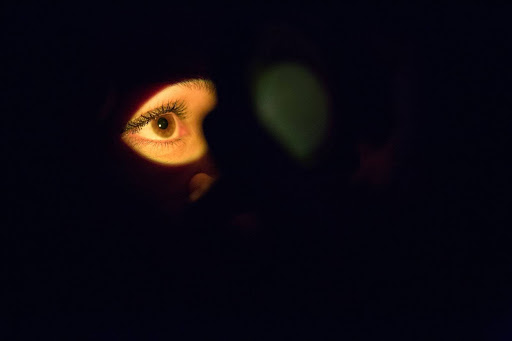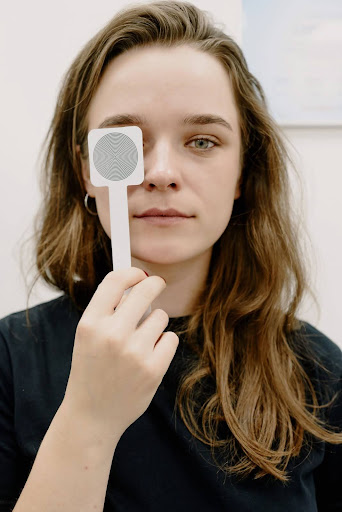The world of vision correction has been revolutionized by LASIK eye surgery, a procedure that has granted millions with crystal clear vision. This is evident in the statistics: according to a 2016 study in the Journal of Cataract & Refractive Surgery, a staggering 99.5% of patients reported achieving better than 20/40 vision post-LASIK.
Despite these promising figures, the journey to LASIK begins with understanding your suitability for the surgery. Here, we demystify the qualifications and candidacy for LASIK, offering a clear pathway to those considering this transformative procedure.
Understanding LASIK Eye Surgery
LASIK (Laser-Assisted In Situ Keratomileusis) is a form of refractive eye surgery that employs advanced laser technology to reshape the cornea. This procedure is designed to correct common vision issues, including nearsightedness, farsightedness, and astigmatism. Understanding the qualifications for this procedure is crucial for both safety and effectiveness.
Key Qualifications for LASIK Candidates
Choosing to undergo LASIK eye surgery is a significant decision that requires careful consideration of various health factors. To ensure the best possible outcomes, there are vital qualifications that potential candidates must meet.
These qualifications ensure not only the safety and effectiveness of the procedure but also its long-term success. Here, we delve into the specifics of these qualifications, offering a clear understanding of what makes an ideal LASIK candidate.
Age and Vision Stability
For LASIK surgery, the candidate should typically be over 18 years old. This age requirement ensures that the eyes have fully matured and are less likely to undergo significant natural changes in vision.
Additionally, having a stable vision prescription for at least one year before the surgery is crucial since vision stability indicates that the eyes have reached a point where significant refractive errors are unlikely to develop soon. This stability is vital to ensuring that the corrective effects of the LASIK procedure are long-lasting, reducing the likelihood of needing further vision correction.
Eye Health Requirements
Good eye health is a foundational requirement for undergoing LASIK. One of the primary considerations is the corneal thickness because the LASIK procedure involves reshaping the cornea to correct vision. A thinner cornea might not provide enough tissue for safe reshaping, potentially leading to complications.
At Saddleback Eye Center, our commitment to patient safety and optimal outcomes begins with a comprehensive initial LASIK exam. This detailed 2½-hour, 14-test diagnostic process is designed to meticulously assess each aspect of your eye health and general well-being. By conducting this thorough examination, we ensure that every candidate meets the qualifications for LASIK and is provided with a personalized care plan tailored to their unique vision needs.
Limitations and Uncommon Considerations in LASIK Candidacy
While LASIK eye surgery has proven to be a highly effective and transformative procedure for many, it’s crucial to recognize that not everyone is an ideal candidate. There are certain limitations and uncommon considerations that must be taken into account. Understanding these factors is vital in determining whether LASIK is the right option for you.
Special Considerations for Unique Cases
Merging the factors of unique eye characteristics, hormonal changes, and medication interactions, we recognize that certain conditions necessitate careful consideration before proceeding with LASIK:
High Prescriptions/Irregular Corneas (Keratoconus)
Patients with extreme refractive errors or irregularly shaped corneas, as seen in conditions like keratoconus, need a thorough evaluation before undergoing LASIK surgery.
Additionally, extreme refractive errors involving significantly nearsighted or farsighted vision may require more intensive cornea reshaping, which can be particularly challenging if the cornea is not thick enough to support the desired reshaping. Lastly, irregular corneas present a risk of uneven reshaping during the procedure, which could lead to less-than-optimal visual outcomes.
At Saddleback Eye Center, we carefully asses patients with these conditions using advanced diagnostic technology. In some cases, alternative treatments or specialized LASIK techniques may be recommended to ensure the best possible outcomes while maintaining the integrity of the cornea.
Hormonal Changes (Pregnancy, Menopause)
Life events causing hormonal fluctuations, such as pregnancy or menopause, can temporarily affect vision stability. During pregnancy, changes in metabolism, hormones, and blood circulation can alter the thickness and curvature of the cornea, impacting LASIK outcomes.
We generally advise pregnant or breastfeeding mothers to wait at least 6 months before undergoing LASIK. This waiting period allows the body’s hormonal levels to return to normal, ensuring a more stable and accurate assessment of vision for the LASIK procedure.
It is strongly advised for women going through menopause to ensure their vision remains stable for at least one year before considering LASIK, as this safeguards against potential hormonal fluctuations that can affect the procedure’s outcomes.
Medication Interactions
Certain medications, especially those causing dry eyes or hormonal imbalances, can influence the success of LASIK. For instance, steroids can delay healing, while medications like antihistamines can exacerbate dry eye symptoms post-surgery.
A thorough review of all medications with your LASIK surgeon is essential. In some cases, temporary adjustments to medication or pre-operative treatments to optimize eye health may be necessary before proceeding with LASIK. This ensures that medications do not adversely affect the surgery or the healing process.
Hormonal Changes
There are specific limitations that can affect a person’s eligibility for LASIK. Recognizing these helps in making an informed decision:
Age-Related Factors (Presbyopia)
Presbyopia, or age-related farsightedness, typically develops in individuals over 40. While LASIK corrects the cornea’s shape, it doesn’t prevent age-related changes within the eye, meaning presbyopia can still occur post-LASIK.
For patients with presbyopia, blended monovision can be an effective solution. This technique adjusts one eye for distance and the other for near vision, reducing the dependence on reading glasses. Dr. Manger’s expertise in blended monovision allows for a customized approach, offering clear vision for both near and distant objects.
Severe Dry Eye Syndrome
Patients with severe dry eye syndrome may find their condition exacerbated by LASIK, as the surgery can impact tear production.
Preoperative treatment to improve tear quality and quantity is essential for patients with dry eyes. Specialized eye drops, punctal plugs, or other therapies can optimize eye health before the surgery, ensuring a safer and more comfortable LASIK experience.
Thin Corneas
The procedure necessitates a certain corneal thickness for reshaping. Extremely thin corneas might not be suitable for the surgery, posing a risk of post-operative complications.
Patients with thin corneas may be evaluated for alternative refractive surgeries like PRK (photorefractive keratectomy), which is similar to LASIK but does not require creating a corneal flap. This alternative can provide an effective vision correction solution without the risks associated with thin corneas.
Autoimmune Disorders/Uncontrolled Diabetes
These conditions can affect healing post-surgery. For example, diabetes can lead to fluctuating glucose levels, impacting vision stability, while autoimmune disorders might slow corneal healing.
For patients with these conditions, a thorough medical evaluation and stabilization of the condition are crucial prior to LASIK. Managing blood sugar levels in people with diabetes and ensuring autoimmune diseases are under control can significantly improve surgical outcomes and healing post-LASIK.
These considerations and limitations are critical in determining LASIK candidacy. They underscore the importance of a comprehensive eye examination and a detailed discussion with a qualified eye surgeon, ensuring each individual’s unique circumstances are thoughtfully considered.
Choosing the Right LASIK Surgeon
Choosing the best LASIK surgeon is crucial to a life-changing vision correction journey. At Saddleback Eye Center, we combine advanced technology with the profound expertise of Dr. Manger to offer you unmatched LASIK outcomes. Ready to see the world more clearly? Reach out to Saddleback Eye Center today!




